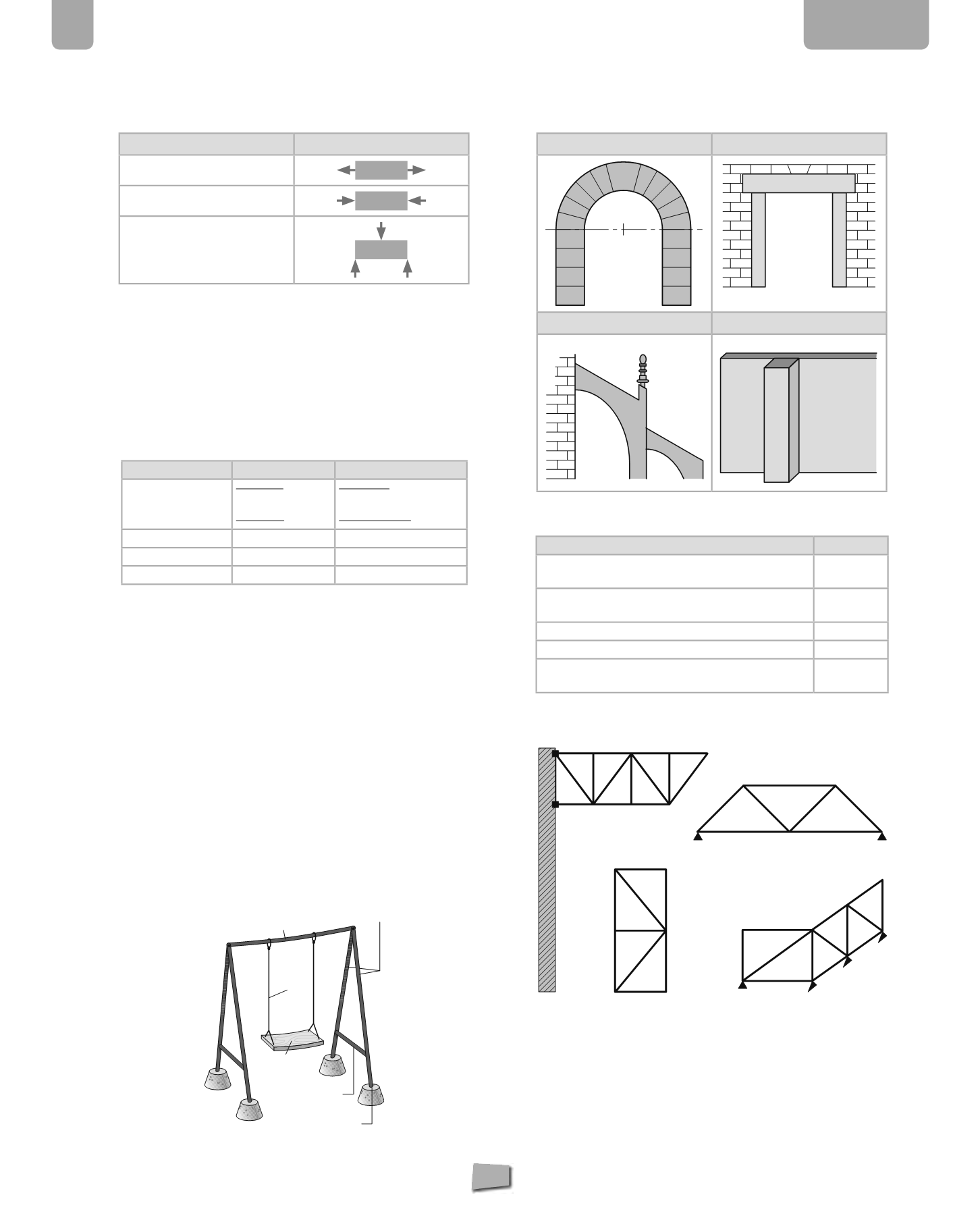
5
Structures
132
EXAM A
1.
Define the following stresses. Put the direction and
path of the forces in the box and give an example.
Stress
Forces
Traction
Compression
Bending
Traction: a stress that appears when forces try to stretch the
body that they act on. Example: the rubber band of a catapult
Compression: a stress created by of two opposing forces that are
trying to crush the body. Example: a chair leg.
Bending: a stress that appears when two forces try to bend
the body that they act on. Example: a bed spring.
2.
Complete the following table on structural elements
and their stresses (in the first row, the incorrect option
is crossed out).
Element
Position Stress that it bears
Beam
Vertical /
Horizontal /
Slanting
Traction /
Bending /
Compression
Pillar
Vertical
Compression
Cable suspender
Vertical / Slanting Traction
Plinth
Horizontal
Compression
3.
Complete the following sentences with the correct
words.
a)
Structures that are not likely to move are called
stable.
b)
We say that a structure is rigid when it doesn’t
deform
.
c)
In order for a structure to be
resistant
, it must bear the
tension acting on it without breaking
d)
Arches are made of pieces called
arch stones
; the central
part is the
keystone
, and the side parts are the
lateral arch
stones
. The pieces of the arch are subject to
compression
stress.
e)
The
foundations
are the intermediate level between the
building and the ground.
f)
The open space between the supports of a beam is called
span
.
4.
Write on the illustration the name of each element and
say what stress they can support
traction
bending
compression
bending and
compression
traction
bending
5.
Draw the following elements: horseshoe arch, lintel,
flying buttress and pilaster.
horseshoe arch
lintel
flying buttress
pilaster
6.
Give five examples of loads that can act on the building
you are in now. Say whether they are fixed or variable.
Load
Type
Buildings’ own weight and the weight of the
walls.
Fixed
Weight of the people who are inside the building
at a given time.
Variable
Force of the wind on the external walls and roof. Variable
Weight of the bathroom fittings and tiles.
Fixed
Weight of the books and shelves in each
classroom.
Variable
7.
Add bars to these structures to give them complete
rigidity.
8.
Think about a soft drink can, a wooden boat and a
plane. What part of these objects make up its structure?
What loads do they have to bear?
Soft drinks can: the entirety of the can is its structure. The
loads it bears are: the pressure of the liquid inside, the force
of the hand that is holding it and the weight of other cans
stacked on top of it.


